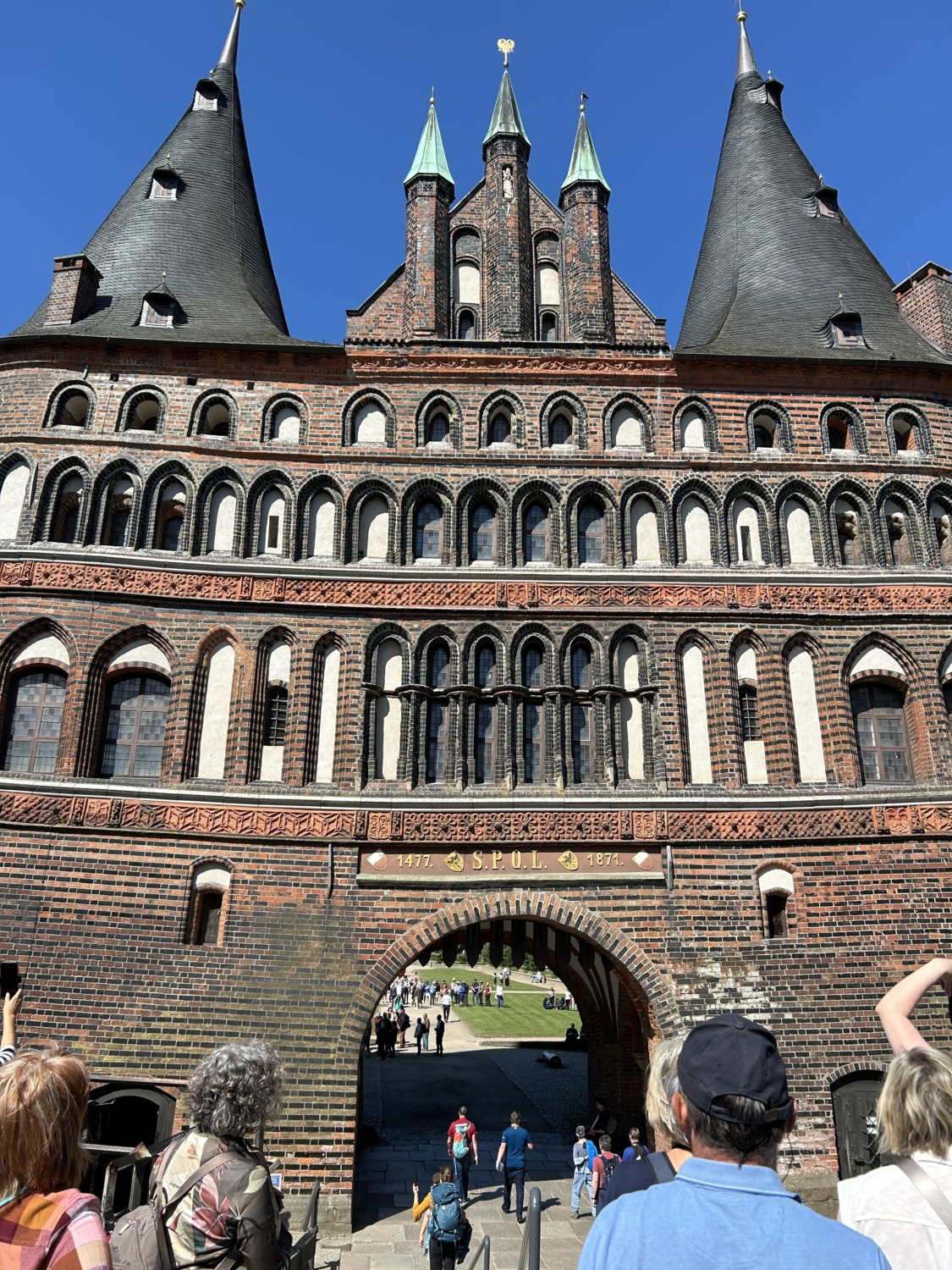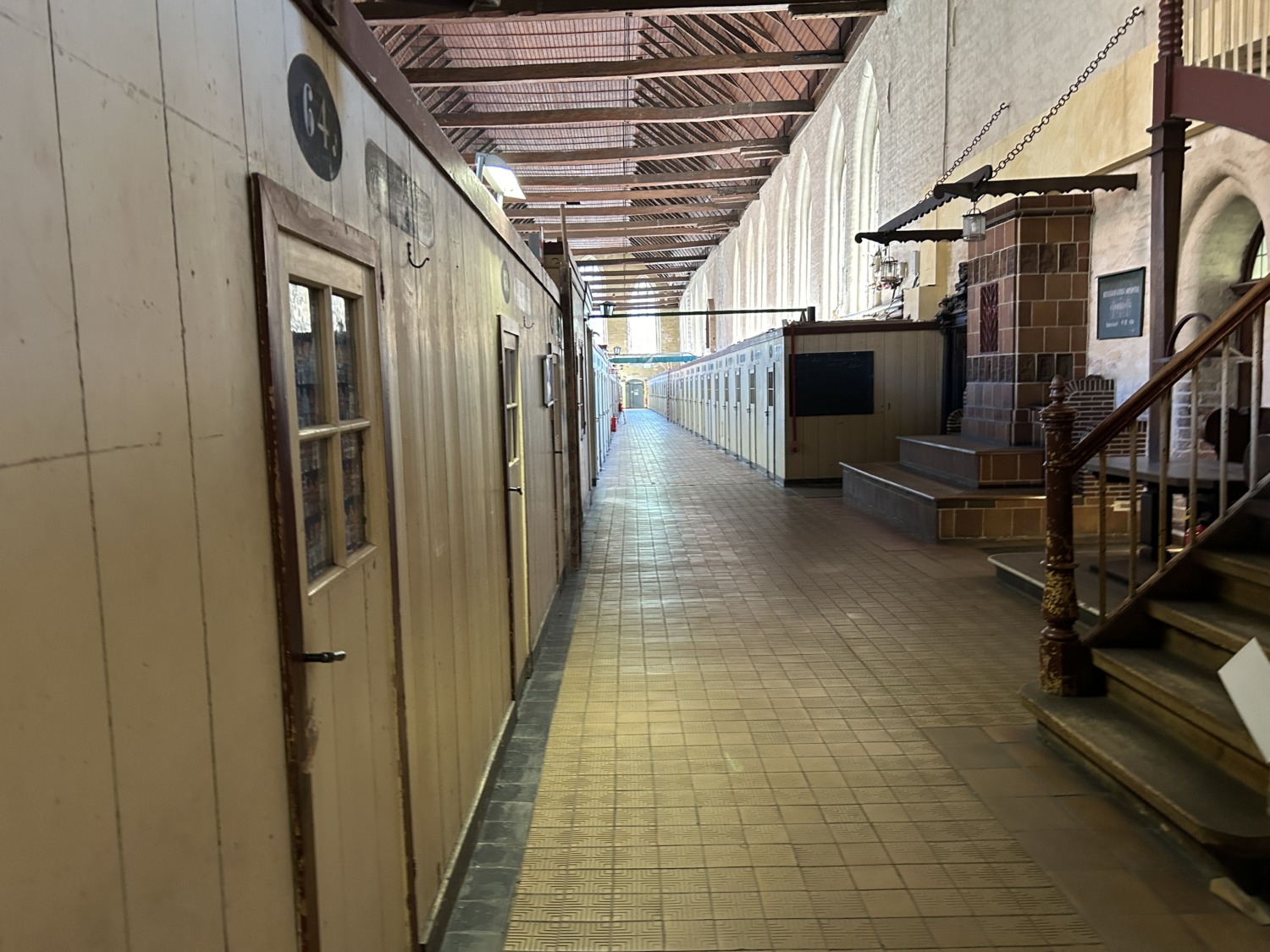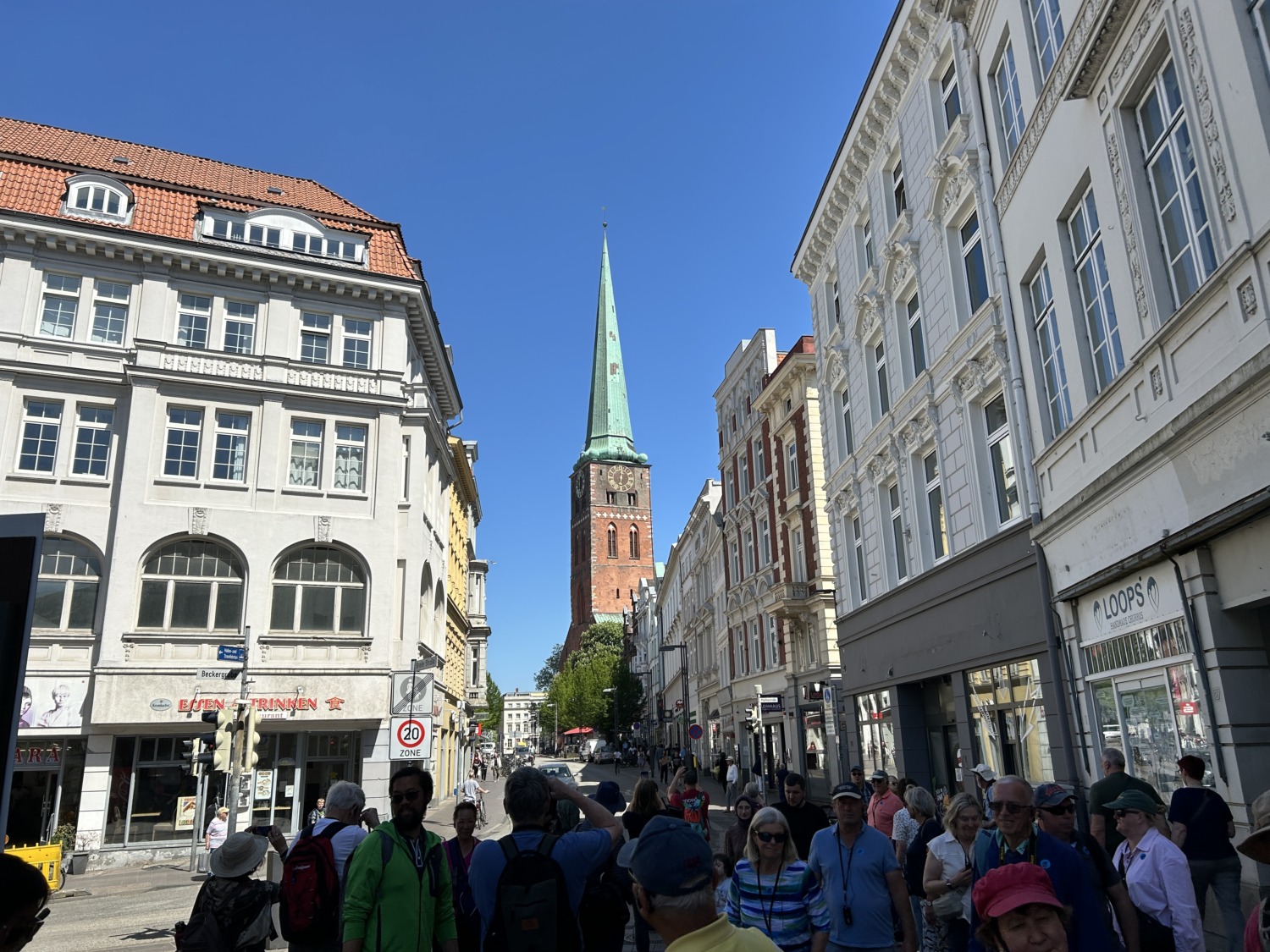We visited Lübeck, Germany, the day after visiting Ronne, which was quite a contrast. Lübeck had all the historical bona fides that Ronne lacked. Not only that, but Lübeck was the capital of the Hanseatic League and its most important city. In fact, the official name of the city is “Hanseatic City of Lübeck.”

I have mentioned the Hanseatic League before, but here is a quick recap. The Hanseatic League was a medieval commercial and defensive network of merchant guilds and market towns in Central and Northern Europe. Growing from a few North German towns in the late 12th century, the League expanded between the 13th and 15th centuries and ultimately encompassed nearly 200 settlements across eight modern-day countries, ranging from Estonia in the north and east, to the Netherlands in the west.
The League began as a collection of loosely associated groups of German traders and various towns aiming to expand their mutual commercial interests, including protection against robbery. Over time, these arrangements evolved into the Hanseatic League, offering traders toll privileges and protection on both affiliated territory and their trade routes. Growing economic interdependence among influential merchant families led to deeper political integration and the removal of trade barriers. This gradual process also saw the emergence of standardized trade regulations.
As the center for the Hanseatic League, Lübeck was a rich and influential city. Those who became wealthy because of trade, built churches, warehouses, and imposing homes. They had an almshouse and hospital long before they were customary. There were even apartments for widows of sailors and a guild hall for ships’ captains. Today the historic old town retains that wealthy look.
Lübeck is Germany’s most extensive UNESCO World Heritage Site. The old town has the highest number of tall church towers worldwide. Nicknamed the “City of the Seven Towers,” Lübeck’s skyline is dominated by the seven towers of its five Protestant main churches: St Mary’s, Lübeck Cathedral, St James’, St Peter’s, and St Giles’s. The cathedral, built in the 13th century, was the first large brickwork church in the Baltic region. The five churches were all constructed between 1150 and 1350, which is a sign of the city’s wealth.

In 1375, Emperor Charles IV named Lübeck one of the five “Glories of the Empire”, a title shared with Venice, Rome, Pisa, and Florence. Even after the dissolution of the Hanseatic League in the 1600’s, Lübeck retained its status as a wealthy and important city. It retained its independent city-state status until 1937, and was the last city in Germany to succumb to Nazi power.
For our tour of Lübeck, we boarded a bus with an escort named Ali. Ali is from Pakistan and came to Germany to do his Master’s in Electrical Engineering. All higher education in Germany is free and they pay students a stipend to stay in school. Ali spoke excellent English because all education in Pakistan is in English starting with First Grade. He gave us some German history during the hour-long bus ride to Lübeck.

When we arrived in the old town, Ali turned us over to Christa. Although Christa is German, she lived in Great Britain for 25 years, so she spoke English with a British accent. She was an excellent guide and tried to keep us moving along as a group.

We started our tour at the Holstentor, the Holsten Gate. The gate is one of the two remaining remnants of the old city wall, and is four stories tall. The gate was built in 1478 and was already leaning before it was finished. Turns out it was too heavy for the foundation to support. There was a wall that surrounded the entire old city. The wall was torn down in the 1700’s because it was restricting the industry of the town. In 1863, there was a push to tear down the Holstentor because it was in the way of a new railroad line. The citizens of the town, however, decided to save it and restore it. The restoration was completed in 1871.

As we walked along, Christa pointed out the salt warehouses, built along the canal. They were built at a time when one barrel of salt cost the same as a new house, so the warehouses are fancy. We saw all five of the Hanseatic churches. The town hall had been expanded several times during different architectural eras. The black bricks that were originally considered ornamental (they glow like gold in the sunlight) fell out of favor for fancier gothic and renaissance decoration. There was a big square outside the town hall where they were setting up for a festival.

Our group walked along a pedestrian shopping area and wandered down narrow, medieval streets. We saw the oldest apothecary and the Guild Hall for the Captains. We saw lots of merchants houses. In addition, we had time to go into two of the churches. The original alms house for the elderly was in one of them.

Our tour finished with a stop at a Marzipan shop, Neideregger. Marzipan is made from almond meal and sugar, both of which had to be imported. The wealthy merchants of Lübeck loved marzipan and could afford to indulge. The tourists love to indulge in it now. Each of us had a piece of marzipan gateau. It had pie crust on the bottom, a layer of raspberry, a layer of sponge cake, hazelnut cream filling, and a layer of marzipan on top. Tom thought it was very good.

Once we finished our cake, we had 25 minutes free before we had to be back on the bus. That gave Tom and I just enough time to look for a souvenir shop. This was our second day in Germany, and I hadn’t found a demitasse spoon yet. Unfortunately I didn’t find one in Lübeck either. We only found one tiny souvenir shop and it didn’t have any.
Our trip to Lübeck was very interesting. We have learned so much about the Hanseatic League on this trip and were glad to visit the city that was the hub of it all.

